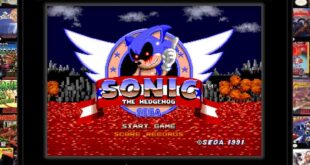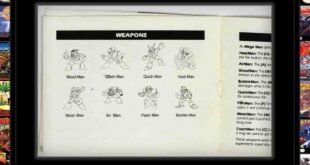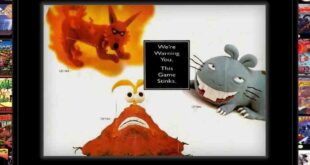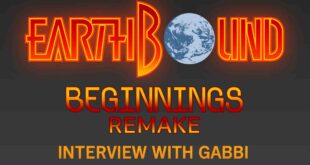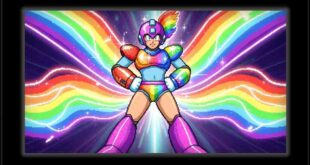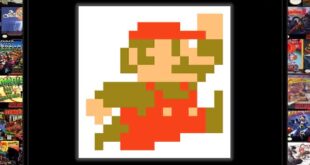A World Before Mods Were Mainstream Today modding feels inseparable from gaming. Entire communities thrive on places like Nexus Mods, and Steam Workshop makes adding fan content as simple as clicking a button. Bethesda titles like Skyrim or Fallout 4 are almost defined more by their mods than their base games. But long before modding became normalized and developer-supported, fans were already hacking away at their favorite titles. And they …
Read More »Sticky: Big News from Retro Replay – Contests, YouTube Revenue, and Writing Opportunities
Every so often it feels right to step back and let the community know what is happening here at Retro-Replay. This site has always been about more than just nostalgia, and now we are pushing into something much bigger. From giving away pieces of my personal video game collection, to sharing YouTube revenue, to opening the doors for new writers, there are some exciting opportunities worth sticking to the top …
Read More »A Nightmare on Elm Street: One of the Few 4-Player NES Games
A Nightmare on Elm Street and the Forgotten Era of 4-Player NES Gaming Multiplayer on the NES Was Limited When the Nintendo Entertainment System hit North America in 1985, multiplayer usually meant two players taking turns. Titles like Super Mario Bros. or The Legend of Zelda were primarily solo adventures, while Contra and Double Dragon II gave you that coveted two-player co-op. Four people on one NES? That was practically …
Read More »Lost Archives of Otaku no Zoku: Tracing the Origins of Xbox Emulation and Homebrew
Discover the untold story of Otaku no Zoku, the underground pioneer who sparked Xbox emulation with MAME before the console’s release. A legend of homebrew history. The world of video game emulation has always been shaped by shadowy figures and passionate hobbyists. Behind every emulator release there is usually a name that becomes legendary in forums and IRC channels, a handle that carries more weight than a real identity. In …
Read More »Wolfenstein 3D Was Banned in Germany
The Game That Broke the Mold and the Law When Wolfenstein 3D dropped in 1992, it ignited a revolution. It was not just a technically slick first person shooter, it was a raw, unapologetic romp through Nazi bunkers that ended in a face off with a cyber fueled Mecha Hitler. Gamers worldwide embraced it as a milestone. But in Germany, the response was silence, because the game was outright banned. …
Read More »When Nintendo Sued Blockbuster Over Photocopied Manuals
When Nintendo Took Blockbuster to Court The Battle Over Rentals In the late 1980s Nintendo ruled the living room. The NES was in millions of homes, and kids flocked to local rental shops like Blockbuster to grab the latest cartridges for a weekend of gaming. But while game rentals exploded in popularity, Nintendo was far less enthusiastic. They worried that renting would cut into cartridge sales, since players could beat …
Read More »EarthBound’s “This Game Stinks” Ad Campaign
A Bold but Bizarre Idea In 1995 Nintendo of America faced a challenge. They were preparing to launch EarthBound on the Super Nintendo, a quirky role playing game full of humor, offbeat enemies, and suburban satire. But how could they sell such an unusual RPG to an American audience that was not yet fully invested in the genre? Their answer was one of the strangest campaigns in gaming history. Nintendo …
Read More »Interview: Gabbi the developer bringing EarthBound Beginnings to life on the SNES
The Mother series has always held a special place in the hearts of retro role-playing game fans. In Japan it was known simply as Mother, while in the United States most people only experienced the second game in the series, which was released on the Super Nintendo under the title EarthBound. That game gained a reputation for its quirky humor, heartfelt storytelling, and unusual modern-day setting. Over time it became …
Read More »The Legendary Six Player X-Men Arcade Cabinet: A Deep Dive into Rarity, Nostalgia, and Gaming History
A Marvel in Coin Op Form There are certain machines that instantly capture the imagination of anyone who grew up in the neon glow of the arcade era. The six player X-Men arcade cabinet is one of them. Released by Konami in 1992, this massive, hulking creation became a legend for its sheer size, the chaotic fun of six simultaneous players, and the novelty of its dual screen setup. Unlike …
Read More »Mega Man Was Almost Called “Rainbow Man”
A Colorful Beginning Long before the blue suited hero cemented his place in gaming history, Capcom’s designers toyed with a name that could have changed everything, Rainbow Man. It was not some throwaway title scribbled in a notebook. The choice reflected what made the character unique. Each time he defeated a Robot Master he absorbed their power and his armor blazed with a new color. According to the character’s development …
Read More »Mario’s Mustache Was a Hardware Trick
Mario’s Mustache Was a Hardware Trick Mario’s iconic mustache wasn’t added for style — it was added because the technology of the time demanded it. When Shigeru Miyamoto designed Mario for Donkey Kong in 1981, he was limited to a tiny 16×16 sprite on arcade hardware. There simply weren’t enough pixels to draw a clear mouth and nose. The solution? A bold mustache that visually separated the nose from the …
Read More »GypPlay on Dreamcast was a tiny miracle for broke movie nerds – Nostalgia
Decades ago, when DVD players were still out of reach, Dreamcast fans found a workaround. Thanks to GypPlay by TheGypsy, Sega’s console doubled as a movie player for burned Video CDs, creating a moment of magic that the DCEmulation community — run today by darc — continues to preserve.
Read More »Game Emulation History Part 3: 1997 to 1999 — The Wild West
Part 1: 1990 to 1993 —The Dinosaurs Wake Part 2: 1994 to 1996 — The Spark Catches Fire Part 3: 1997 to 1999 — The Wild West (These are the opening three sections in a six-part history of emulation series, and they are still very much a work in progress. Tracking down reliable sources for material that has long since disappeared is not always easy, so the record here will …
Read More »Game Emulation History Part 2: 1994 to 1996 — The Spark Catches Fire
Part 1: 1990 to 1993 —The Dinosaurs Wake Part 2: 1994 to 1996 — The Spark Catches Fire Part 3: 1997 to 1999 — The Wild West (These are the opening three sections in a six-part history of emulation series, and they are still very much a work in progress. Tracking down reliable sources for material that has long since disappeared is not always easy, so the record here will …
Read More »Game Emulation History Part 1: 1990 to 1993 — The Dinosaurs Wake
Part 1: 1990 to 1993 —The Dinosaurs Wake Part 2: 1994 to 1996 — The Spark Catches Fire Part 3: 1997 to 1999 — The Wild West (These are the opening three sections in a six-part history of emulation series, and they are still very much a work in progress. Tracking down reliable sources for material that has long since disappeared is not always easy, so the record here will …
Read More » Retro Replay Retro Replay gaming reviews, news, emulation, geek stuff and more!
Retro Replay Retro Replay gaming reviews, news, emulation, geek stuff and more!
